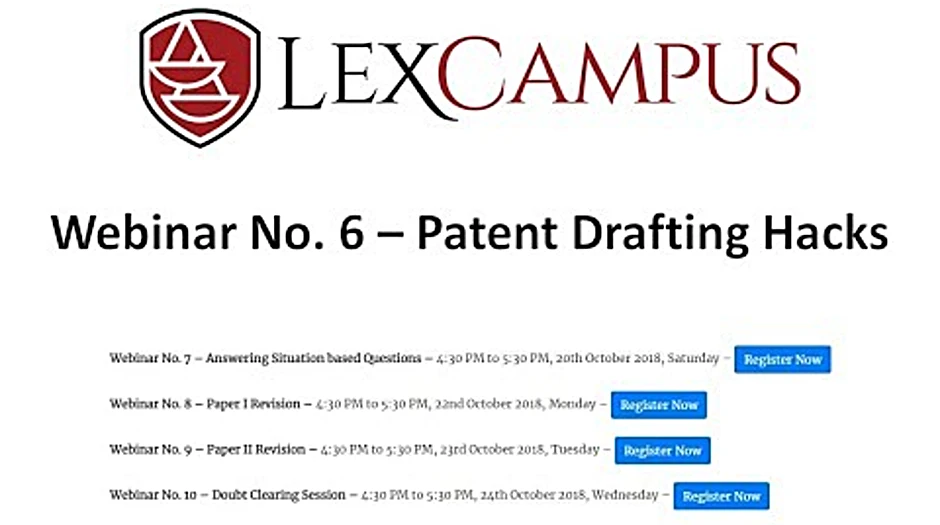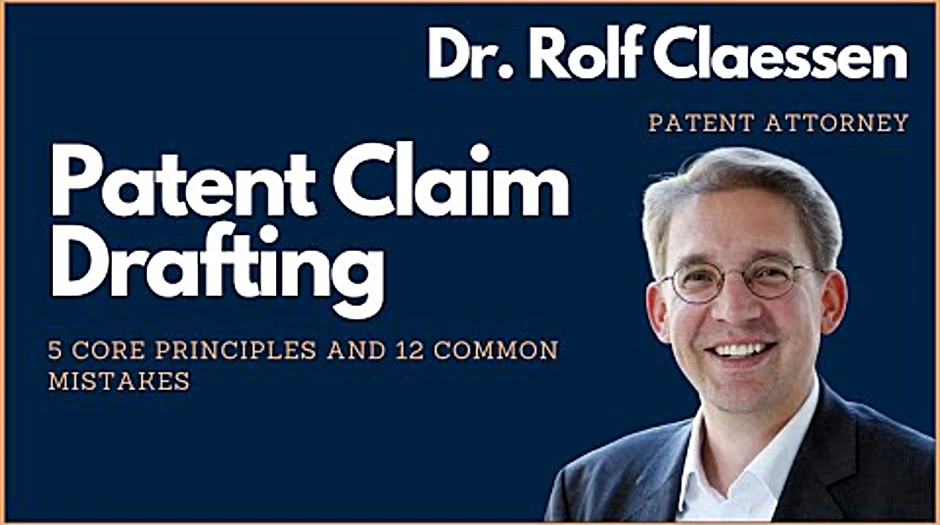How to get patent drafting experience [Detailed Response]
Table of Contents
- How do I prepare for a patent draft?
- How do you draft an invention?
- What is patent strategy?
- How many hours does it take to write a patent?
- How much money does it take to get a patent?
- How long is a patent good for?
- What are the 3 types of patents?
- How can I get a patent with no money?
- Is it easy to patent an idea?
- How many words is the average patent?
- Is copyright a patent?
- What is patent drafting for beginners?
- What does pct mean in patents?
- What is a patent draftsman?
- How long should it take to draft a patent application?
- Can I write my own patent?
- How many pages is a patent application?
- Who writes the patent?
- What is the most important part of a patent?
- What are the basic steps required for patent applications?
Last updated : Sept 7, 2022
Written by : Noe Rhule |
Current |
Write a comment |
How do I prepare for a patent draft?
- Check if your invention is patentable.
- Fill out the patent drafting application.
- Fill the necessary forms to complete your patent application.
- Publication of Patent Application.
- Examination of the patent.
- Final decision.
What is patent drafting for beginners?
This course is designed to enable beginners without any prior knowledge on patent drafting to draft patent specifications on their own. The course will cover the fundamental principles of patent drafting and discuss in detail the concepts in patent law in the context of patent drafting.
What is a patent draftsman?
Patent drafting is a part of how to patent an idea and is the process of writing the patent description and claims. It is at the core of every patent application. When the patent is issued or allowed, the draft serves as the specification part of the document.
How long should it take to draft a patent application?
However, most patent applications take about 30 to 40 hours to draft. This estimate includes the initial inventor interview when the patent attorney interviews the inventor to learn as much as possible about the invention.
Can I write my own patent?
You can file a patent application on behalf of yourself or your co-inventors. Alternatively, you can hire a registered patent agent or attorney to file your application for you. Patent applications require both legal and technical expertise and even small mistakes can dramatically compromise the value of the patent.
How many pages is a patent application?
The patent application includes a request with the details of the applicant and a document describing and illustrating the invention one wishes to protect. Its length will vary depending on the invention, sometimes it consists of only 5 pages, while sometimes it is 30 pages long.
Who writes the patent?
Patent agents help inventors prepare, file, and see patent applications become registered patents in the United States Patent and Trademark Office (USPTO). In the U.S., over 48,000 people serve as patent agents.
What is the most important part of a patent?
CLAIMS. The most important part of the document, the claims set forth and define the patent's scope of exclusive rights. In other words, they describe what the patent does or does not cover. Each claim element should be shown in the drawings and described in the detailed description.
What are the basic steps required for patent applications?
- Step 1: File an application for patent with the United States Patent and Trademark Office (USPTO)
- Step 2: Examination of patent application.
- Step 3: Respond to any objections or rejections made by the examiner.
- Step 4: Patent grant.
How do you draft an invention?
- Rely on a Professional.
- Conduct a Thorough Prior Art Search.
- Draft Broad Claims.
- Align Claims and Specification.
- Stack Your Claims.
- Clarity is Critical.
What is patent strategy?
A patent strategy is a series of steps that companies take in order to secure their inventions and their position within the technological sector in which they operate. Similar to business strategies, patent strategies often require a preventive analysis of the status quo to identify risks and opportunities.
How many hours does it take to write a patent?
Between the initial draft, review by inventors and in-house counsel and revisions, writing one patent application usually takes about two to three months and more than 20 hours.
How much money does it take to get a patent?
A patent attorney will usually charge between $8,000 and $10,000 for a patent application, but the cost can be higher. In most cases, you should budget between $15,000 and $20,000 to complete the patenting process for your invention. Previous: Why should you file a patent application?
How long is a patent good for?
Patent protection is granted for a limited period, generally 20 years from the filing date of the application. Is a patent valid in every country? Patents are territorial rights.
What are the 3 types of patents?
What kind of patent do you need? There are three types of patents - Utility, Design, and Plant. Utility patents may be granted to anyone who invents or discovers any new and useful process, machine, article of manufacture, or compositions of matters, or any new useful improvement thereof.
How can I get a patent with no money?
The Patent Pro Bono Program attempts to match inventors with registered patent agents or patent attorneys. These practitioners volunteer their time without charging the inventor. However, the inventor still must pay all fees that are required by the USPTO; these cannot be paid by the practitioner.
Is it easy to patent an idea?
The Investment Needed to Patent an Idea It usually takes between 18 and 24 months to receive a patent in the United States. You'll likely need to invest at least $10,000 to $25,000 in this process. Patenting an idea is much easier if you're using an online legal service like LegalZoom.
How many words is the average patent?
The more words you add, the narrower the patent's protection.†The researchers found that typical first claims average around 120 words, but almost no patents exceed 500 words in that section. Ninety-five percent of first claims have less than 375 words.
Is copyright a patent?
A patent protects new inventions, processes, or scientific creations, a trademark protects brands, logos, and slogans, and a copyright protects original works of authorship.
What does pct mean in patents?
The Patent Cooperation Treaty (PCT) is an international treaty with more than 150 Contracting States.

Check these related keywords for more interesting articles :
World intellectual property organization headquarters
Trademark protection in nigeria
Trademark infringement what does it mean
What does trademark apply to
Can i trademark a word
How to find out patent application
Intellectual property act india
Intellectual property risk management
How to protect your business name and logo
How to spell patent medicine
Intellectual property rights assessment tcs answers
How does a copyright license work
How to get a cobranded credit card
Intellectual property option agreement
What is an intellectual property firm
Did you find this article relevant to what you were looking for?
Write a comment
Comment by Freddy Mackinlay
how to draw patent claims I am out creating partner with Fleischmann partner and if you like my videos do me a favor and subscribe to my channel in this video I explain how to drop patent claims in this video I first talked about some general considerations when drafting patent claims then I talked about five essential steps when drafting patent claims after that I talked about twelve common mistakes when drafting patent claims and in the end I give you my favorite strategy how to draw patent claims first some general considerations how can you prove if a patent claim is infringed always have infringement in mind when drafting patent claims for example if you want to drop the complex mixture of polymers in your independent claim then you have to be sure that you can prove this particular mixture polymers in an infringing product otherwise the claim is basically useless and then another general consideration is can the claims easily be circumvented or avoided by infringer always have the infringer in mind when drafting patent claims what would you tell the infringer how to get around the patent claim that you are just about to drop now for the five basic steps how to drop patent claim what is the invention what are all the pieces in parts of the invention what are all the details of the invention are there multiple versions of the invention first you really need to understand the invention in great detail and understand how the invention works from the very start to the very finished product try to identify as many variations of the invention even if the inventor didn't tell you or give you a hint or clue about the different variations of the invention then the second step search for prior art do a really good clever search for prior art and try to identify as many differences of your invention to the solutions that are given in each of these documents then there is the two-part form of the claims which are recommend there is the preamble the preamble is the most generic form of your invention for example a car or a hairdryer or a composition or any generic form that best describes your invention and then there is the body try to identify one feature that differentiates your invention from all the found relevant documents or at least try to find a combination of features as broad as possible that distinguishes your invention from the relevant document that you found and this feature goes into the body for example a car character in that and then the body it comprises wheels made of diamonds of course I think useless invention but nevertheless the distinguishing feature would be the wheels made of diamonds then a fourth step make sure that all features in the claim are connected physically or logically if the elements or features in your claims are not physically or logically connected the examiner might object to your set of claims for not disclosing one uniform invention and raise an objection with lack of unity so you might have to elect a certain set of claims to further prosecute that set of claims and you would be forced to file a divisional application for the other invention then the fifth step did you make use of all different types of claims do you have a product claim do you have a project claim do you have a youth claim for example you can claim a certain product then the process for the manufacture of that product and then the use of that product in a certain application now let's go to the 12 most common mistakes in my view sometimes I see claims made of more than one sentence do not have more than one sentence in any claim otherwise it will be objected is unclear and it will be difficult to enforce then there is the misuse of the word end if you have a list of different components for example you have a motor comprising this and this in this component then you use the word end only before the last component the third common mistake there are different transitional phrases between the preamble and the body for example characterized in that or consisting of or comprising of or having or being composed of characterized in that is the most common transitional phrase and perfectly okay to divide the preamble from the body if you use convicting off then you have a very narrow scope because the following list will be a closed list and if the infringer has any additional elements they might be out of the scope of your patent comprising or being comprised of on the other hand is an open list so you have components a B and C in your list and even if the infringer has any additional elements they will still fall under the scope of your claim so prefer comprising over conditional then there are other transitional phrases like having or being composed of and these phrases at least in the US and sometimes also in Europe are objected to for being unclear so just avoid them then a very important and common to take inconsistent mineralogy always use the exact same term for the same concept for example do not use car and auto mobile interchangeably to mean the same concept then another mistake is claiming the result try to avoid claiming the result as opposed to the component or the concept to achieve the result while claiming the result may be allowable in exceptions typically it is objected to for being unclear then another mistake is to little detail don't leave anything out of the claim that is necessary to work the invention and distinguish the invention from the prior art then another mistake is too much detail in the claim try to avoid any features that are not necessary to work the invention and to distinguish the invention from the prior art if you have more than these features your claim will be more narrow than it should be another mistake try to avoid claims that broaden the independent claim or contradict the independent claim the next mistake try to avoid using trademarks in the claim then another mistake which is just a personal view it is not a general recommendation I typically try to avoid means chat function claims why some colleagues in the u.s. recommend means plus function claims because you can get a jury to decide on claim interpretation however sometimes courts interpret means that function claims in a very narrow sense limited to the options that are given in the description to reach the function then the last and twelfth mistake that I want to talk about the antecedent basis if you first introduce the feature in the claims use the indefinite article like earth or n and if you refer to the same concept the same feature later on in the set of on the same claim use the definite article the now for my personal strategy how to get a good set of claims first to a very good search for prior art for each of these documents try to identify as many differences to your invention as possible and also try to identify the advantage that is connected with each of these differences then try to identify that you can find that differentiates your invention from all of the relevant documents that you found and use that feature in the body of the claim I have some valuable resources and links in the show notes for drafting claims
Thanks for your comment Freddy Mackinlay, have a nice day.
- Noe Rhule, Staff Member
Comment by Domenic
Thanks for this interesting article
Thanks Domenic your participation is very much appreciated
- Noe Rhule
About the author

Noe Rhule
I've studied cognitive biology at Crown College in St. Bonifacius and I am an expert in synthetic chemistry. I usually feel happy. My previous job was residence counselor I held this position for 6 years, I love talking about puzzles and kanjira. Huge fan of Ethan Hawke I practice ski jumping and collect breweriana.
Try Not to laugh !
Joke resides here...
Tags
How do you draft an invention
What is patent strategy
How many hours does it take to write a patent
How much money does it take to get a patent
How long is a patent good for
What are the 3 types of patents
How can I get a patent with no money
Is it easy to patent an idea
How many words is the average patent
Is copyright a patent
What is patent drafting for beginners
What does pct mean in patents
What is a patent draftsman
How long should it take to draft a patent application
Can I write my own patent
How many pages is a patent application
Who writes the patent
What is the most important part of a patent
What are the basic steps required for patent applications
 : 7893
: 7893

